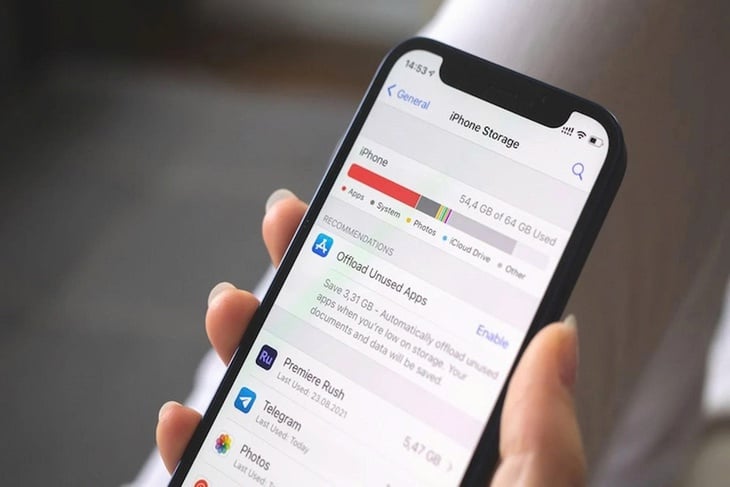
Phones often come in different capacities.
When choosing to buy a phone, users will easily come across popular capacity levels such as 64GB, 128GB, 256GB... Rarely do you see levels such as 70GB, 150GB or 300GB. So why are these numbers chosen as the standard on most technology devices today?
Pricing strategy and consumer psychology
According to Tuoi Tre Online 's research, the reason comes from the way phones and computers store data - based on the binary system, not decimal.
Electronic memory operates in powers of 2, rather than the multiples of 10 that people use in everyday life. A gigabyte (GB) is actually 2³⁰ bytes, or 1,073,741,824 bytes. As a result, capacities are often designed in exponential progressions such as 2⁶ (64GB), 2⁷ (128GB), 2⁸ (256GB), 2⁹ (512GB), and 2¹⁰ (1024GB - or 1TB).
In addition to technical factors, device manufacturers also consider market factors. Choosing capacities such as 64GB, 128GB or 256GB helps position product versions in different price segments, from popular to high-end.
The gap between the capacities is not too small to confuse users when choosing, and at the same time creates a "reasonable upgrade" mentality. For example, when customers are stuck between choosing the 64GB version or paying an extra amount for 128GB, they tend to choose the higher version, contributing to increased sales.
Optimizing supply chain and production

Users can choose the capacity level that suits their needs.
Another important factor is standardization in the supply chain and manufacturing. Flash memory (NAND Flash), the main component of phone memory, is manufactured in dies with standardized capacities. Standardization helps component factories optimize costs, reduce defect rates, and increase stability in mass production.
Over time, these "standard" capacity levels have also formed a habit of recognition for consumers. From computers, USBs, memory cards to smartphones, users have become familiar with levels such as 64GB, 128GB, 256GB... This is both a factor that helps simplify product access and creates synchronization throughout the technology industry.
Why is the actual capacity often lower?
Another interesting point is that users often find that the actual capacity of the device is lower than the number stated on the packaging. The reason is that some of the memory is occupied by the operating system, along with the difference in the conversion between GB (according to the manufacturer's calculation, using the decimal system) and GiB (according to the binary system used by the operating system).
In fact, from the first iPhone models to current Android lines, popular capacity levels have followed an "evolutionary path": from 16GB, 32GB, 64GB, then gradually expanding to 128GB, 256GB, 512GB and even 1TB. Capacity not only increases gradually according to users' storage needs, but also reflects the increasingly developing technology trend.

Phone capacity levels are not random.
Thus, memory capacity numbers are not random choices but the result of a combination of engineering, business strategy, manufacturing standards, and consumer psychology.
Source: https://tuoitre.vn/vi-sao-dung-luong-dien-thoai-thuong-la-64gb-128gb-ma-khong-phai-con-so-khac-20250618100411771.htm


































































































Comment (0)